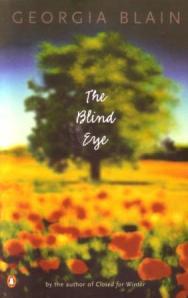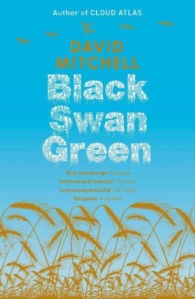 I suspect that the most fictional element of this book is the sub-title: it sure don’t read like no novel, it reads like a writer drawing out and analysing every pain-smeared blood vessel in her body as she misses her True Love, especially in the book’s first half. In some way advertised as erotica (yes, she admits she wants sex and occasionally writes her fantasies), but it’s more of an emotional dissection of lovelorn grief and distressingly inevitable survival. Terribly accurate and terribly terrible, i.e. wrenching to read. Which wasn’t what I wanted.
I suspect that the most fictional element of this book is the sub-title: it sure don’t read like no novel, it reads like a writer drawing out and analysing every pain-smeared blood vessel in her body as she misses her True Love, especially in the book’s first half. In some way advertised as erotica (yes, she admits she wants sex and occasionally writes her fantasies), but it’s more of an emotional dissection of lovelorn grief and distressingly inevitable survival. Terribly accurate and terribly terrible, i.e. wrenching to read. Which wasn’t what I wanted.
What happened was this. I devoured the first memoir (see earlier review), dropped it by the side of my bed, diligently wrote the review before moving on to the next book, and leapt into this one, No. 2-eroonie. And had to stop it, because what I wanted was the continuation of the wry, sharp voice I’d loved, not this longing dismembered on the page, this yearning made language. Which – let’s be clear – is an achievement and a half, ’cos I was feeling those resonances of her pain deep down in the heartlands; the problem was, I wanted to be uplifted and charmed and entertained with cooking and gardening anecdotes, and I didn’t care about her man who’d done her wrong. It was also such a straight-one-eighty narrative that it was extra hard to care; as they said in certain circles in Buenos Aires, it was just too paqui. So I read about 40pp with increasing dismay, and my cynical eyebrow notched itself into its wonted home high, high on my forehead, then I dumped it ’cos she’s discomfited me. Well, for a few days, until I felt I should try again, and appreciate that she’s a writer of many gods and many voices (like the sea), and that I was the wrong audience for this book today. Then I had a post-garden bath this afternoon, and read one chapter, and another, and I was bored but nearly finished, and the water was hot and bountiful, and then I was finished and it was 3pm and studying the future of the library sector hadn’t had a look-in on my Friday.
It felt like this was the book that lived underneath the first of her Blue Mountains books and had now been given a page count of its own. This was the story knocking to get out, as my friend HG terms it. And about halfway through it wavered on its love-centric narrative, and journalised on food and travels and outings, but it didn’t have the winsome tone I’d so enjoyed in Book One. All of which makes me simultaneously nervous and curious about the third one, “The Mountain”, also helpfully on KT’s Housesat Bookshelf. Gone is my facile and probably insulting assumption that what once was always will be, now I have no idea what to expect. For which I do thank her; it’s great to get your assumptions shaken up, and her ability to do so so richly marks her out as a skilful writer.
I can’t honestly say I’d recommend this one, especially compared to “The Waterlily”, but perhaps ask me again when I want to wallow in heartbreak and I may have changed my mind. Stay tuned for the third and final instalment of Llewellyn’s Blue Mountains writings…
Where it came from: KT’s Housesat Bookshelf
Time taken to read: One bed-night earlier this week, then a concerted (illicit) effort in this afternoon’s bath
Where it went to: Back home on the shelf
Reminds me of: —
Who I’d recommend it to: —
Also reading: “The Heart of the Matter” by Graham Greene; “The Cloudspotter’s Guide” by Gavin Pretor-Pinney; “The Blind Eye” by Georgia Blain; “Cold Comfort Farm” by Stella Gibbons
 I started this the other week but hadn’t read enough for it to sink in, so it was back to the beginning a couple of nights ago when I retrieved it from the Pillow Pile. Plot: Silas has a dark secret to do with his past fascination for the (literally) bewitching Constance. For salvation’s sake, his new shag Greta sends him to homeopath Daniel, who has dark secrets with Greta. Jealousy fangs around. Everybody’s nastier than they pretend. It’s dark then maybe light again.
I started this the other week but hadn’t read enough for it to sink in, so it was back to the beginning a couple of nights ago when I retrieved it from the Pillow Pile. Plot: Silas has a dark secret to do with his past fascination for the (literally) bewitching Constance. For salvation’s sake, his new shag Greta sends him to homeopath Daniel, who has dark secrets with Greta. Jealousy fangs around. Everybody’s nastier than they pretend. It’s dark then maybe light again.




